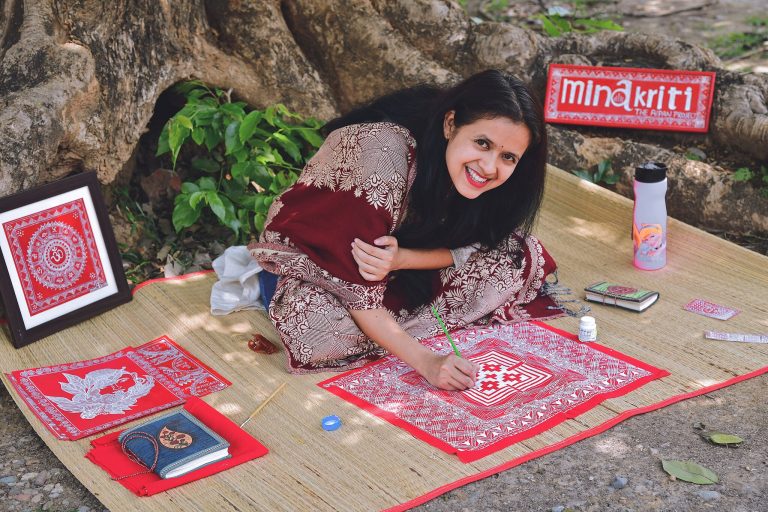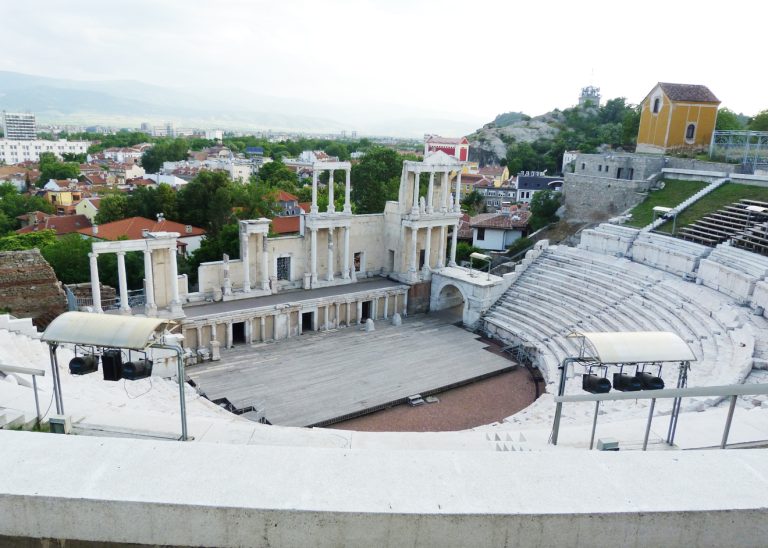Aipan, a traditional folk art form from Uttarakhand, India, holds a special place in the cultural heritage of the region. This art, which has been practiced for generations, is deeply rooted in the religious and cultural practices of the people, particularly in the Kumaoni and Garhwali communities. Aipan designs are not just decorative; they hold symbolic significance, are often linked to spiritual beliefs and practices, and are created during auspicious occasions and festivals.
Origins and Historical Significance

The origins of Aipan are tied to the agrarian and ritualistic lifestyle of the people of Uttarakhand. It has been practiced for centuries, with its patterns reflecting both the religious and social life of the community. The word “Aipan” itself is derived from the Kumaoni word “Arpan,” which means offering. In many ways, this art form is seen as an offering to the deities, as well as a way to invite prosperity and good fortune into homes and temples.
Aipan is believed to have its roots in ancient Vedic rituals where symbols and patterns were drawn as a form of prayer or to mark religious events. Over time, this practice evolved into a more elaborate and detailed art form. The designs are imbued with deep meanings, often drawing on Hindu mythology, local folklore, and nature, which is a central theme in the lives of the people of Uttarakhand, given the region’s mountainous terrain and rich biodiversity.
Techniques and Materials Used
Traditionally, Aipan is drawn on floors, walls, and courtyards using a mixture of rice paste called “biswar,” which is made by grinding rice into a fine paste with water. This paste is used to create white designs on a red-ochre background, known as “geru.” The red ochre is made from natural clay found in the region, giving the art a distinctive look. The contrast between the white and red is not only visually striking but also carries symbolic meaning, with white representing purity and red symbolizing fertility and prosperity.
The designs are drawn freehand, using simple tools such as a piece of cloth or cotton, or sometimes even the fingers, to create intricate patterns. This makes Aipan a highly personal and creative art form, as each artist can bring their unique style and interpretation to the designs. The process of creating Aipan is meditative and ritualistic, with the artist often chanting prayers or mantras as they draw, invoking blessings from the gods.
Success
You are now signed up for our newsletter
Success
Check your email to complete sign up
While the materials used in Aipan are simple and natural, the designs themselves can be incredibly complex, requiring a steady hand and a deep understanding of the symbolic meanings behind each pattern. Some designs are passed down through generations, with mothers teaching their daughters the traditional patterns and techniques.
Symbolism in Aipan Designs
Aipan designs are highly symbolic and are often associated with religious and spiritual beliefs. They can be classified into different categories based on their purpose and the occasion for which they are created. Some of the most common symbols used in Aipan include:
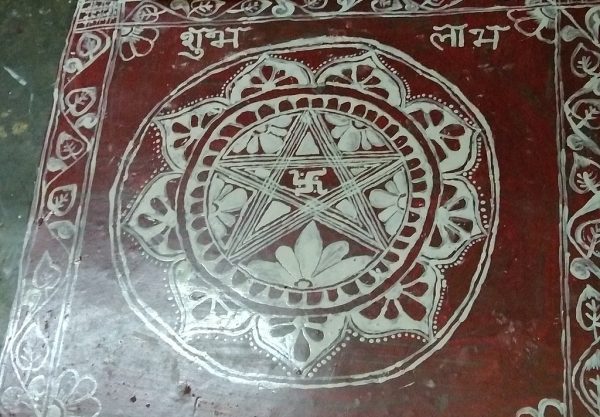
1. Swastika: This word comes from the Sanskrit roots su (good) and asti (to prevail). One of the most ancient and revered symbols in Buddhism and Hinduism, the swastika is believed to bring good fortune and protect against evil. It is often drawn at the entrance of homes or temples as a way to invite positive energy and ward off negative influences.
2. Lotus: The lotus is a symbol of purity and divinity, and it often appears in Aipan designs, particularly in those created for religious rituals or festivals. The lotus is also associated with the goddess Lakshmi, the Hindu goddess of wealth and prosperity.
3. Deity Footprints: The footprints of deities, particularly those of Lakshmi, are often depicted in Aipan designs. These footprints are believed to invite the goddess into the home, bringing wealth and prosperity to the household.
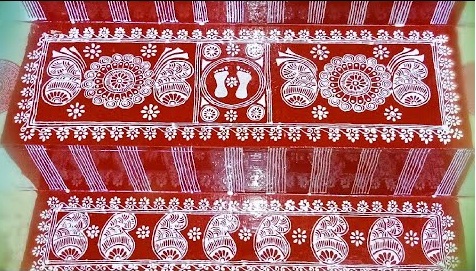
4. Floral and Geometric Patterns: Many Aipan designs feature intricate floral and geometric patterns, which are often used to decorate the entrance of homes during festivals. These patterns are believed to attract good luck and protect the home from evil spirits.
5. Almighty Chakra: The chakra, or wheel, is another common symbol in Aipan art. It represents the cycle of life and death, as well as the eternal nature of the universe. The chakra is often used in designs created for religious rituals, particularly those related to death and rebirth.
6. Fish: In Hinduism, fish are considered symbols of fertility and abundance. In Aipan designs, fish motifs often invoke blessings for prosperity and growth, particularly in agricultural communities.
Each of these symbols holds deep meaning and is used with intention, based on the occasion and the desired outcome of the ritual or celebration. For instance, during Diwali or Navratri, women create elaborate Aipan designs at the entrance of their homes, symbolizing the welcoming of goddess Lakshmi and other deities.
Aipan designs are traditionally crafted for weddings, typically at the entrance of the venue and the bride’s residence. They are believed to bring fortune to the newlyweds and ensure a happy and prosperous marriage.
During a housewarming ceremony for a newly built home, Aipan is often drawn at the entrance to bless the home and invite positive energy into the household.
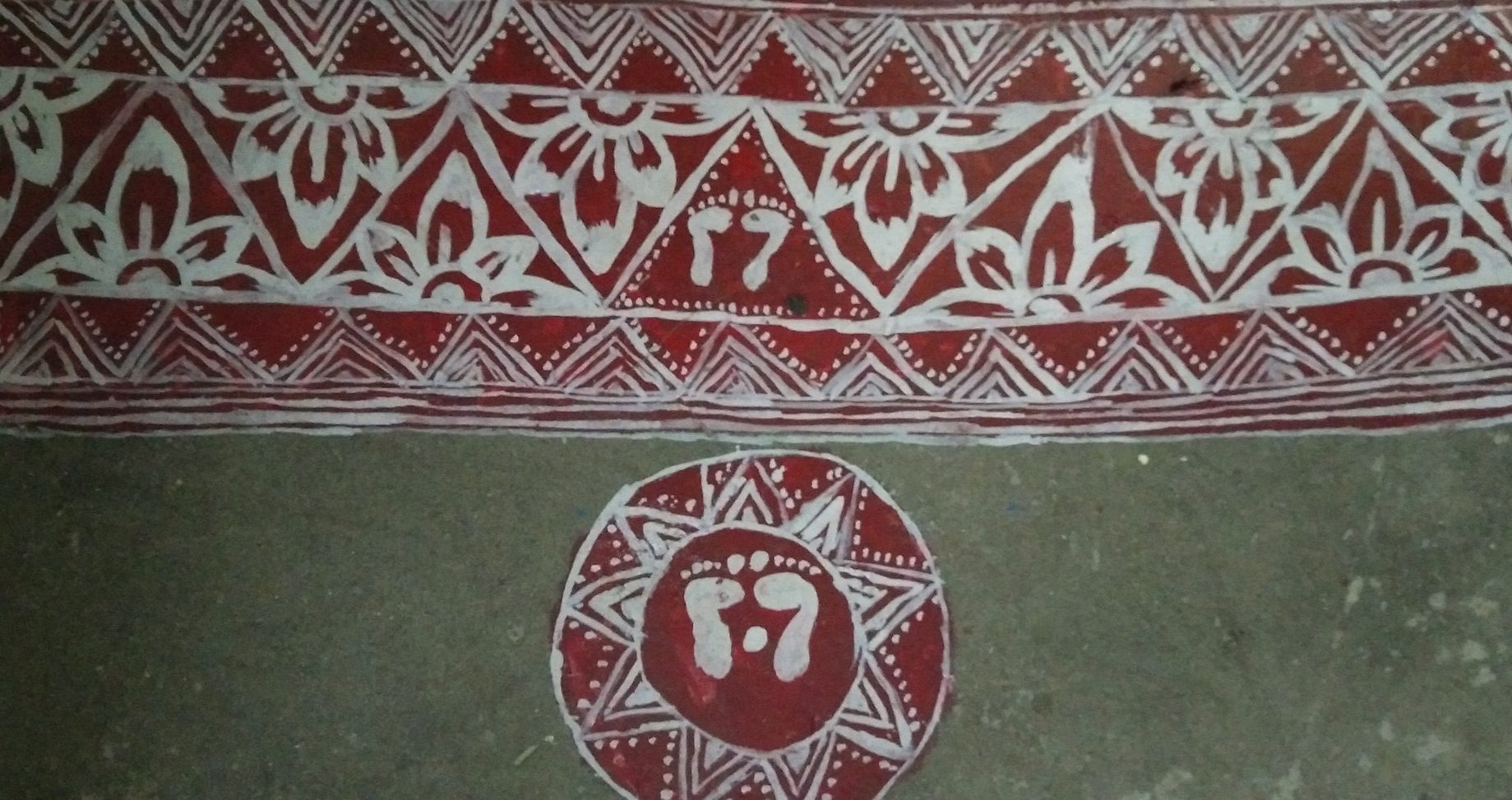
Modern Revival and Adaptation
In recent years, there has been a resurgence of interest in Aipan within Uttarakhand and beyond. As people seek to reconnect with their cultural roots and preserve traditional art forms, Aipan has found new life in a variety of modern contexts. Artists and designers are incorporating Aipan motifs into textiles, home décor, and even contemporary art forms.
Workshops and training programs have been organized to teach the younger generation about the art of Aipan, ensuring that this ancient tradition continues to thrive in the modern world. In addition, Aipan has gained recognition on a national and international level, with exhibitions showcasing the beauty and intricacy of this unique art form.
As a reflection of the spiritual and cultural values of the people of Uttarakhand, Aipan serves as a bridge between the physical and the spiritual, the material and the divine. Through its intricate patterns and symbolic meanings, Aipan connects the people of Uttarakhand to their past, while also adapting to the present and future. As this art form continues to evolve, it remains a testament to the rich cultural heritage of the region, inspiring both artists and art lovers alike.



